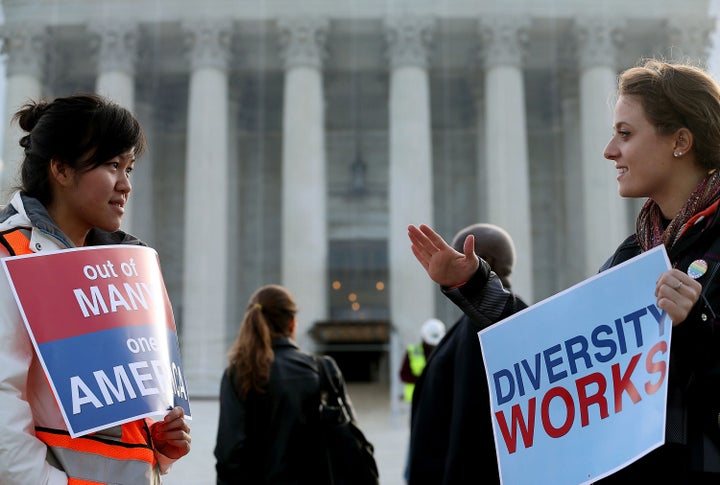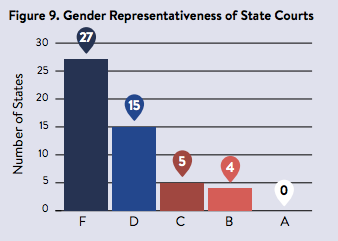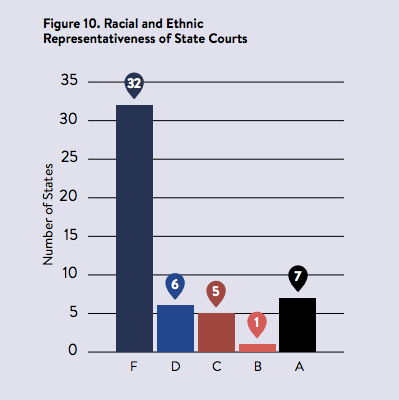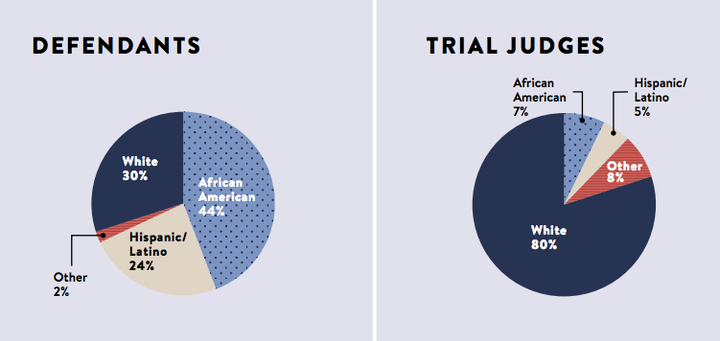
State trial and appellate courts don’t come close to reflecting the racial or gender diversity of the people they serve, according to a recent report from the American Constitution Society for Law and Policy.
Not a single state has achieved gender parity among judges, the ACS found, while only seven have courts that are racially and ethnically representative of their population. And this is still true even though women and minorities have been entering the legal field at record numbers.
The report, aptly titled "The Gavel Gap," rates all 50 states and the District of Columbia as follows: A for those that have achieved at least 90 percent parity, B for 80-89 percent parity, C for 70-79 percent parity, D for 60-69 percent parity and F for those below 60 percent.
More than half of the states earned an F for their lack of progress in putting women on the bench. The four that at least rated a B are Oregon, Nevada, the District of Columbia and New Mexico.

About two-thirds of the states are failing when it comes to racial and ethnic parity on the bench. But Hawaii, the District of Columbia, Oregon, New Mexico, Minnesota, Arizona and Maryland got an A grade.

State courts are the workhorses of the American judicial system. They rule on everything from traffic cases to civil suits to all kinds of criminal prosecutions. While the U.S. Supreme Court hears around 70 cases per year, state judges presided over 94 million cases in 2013, according to the report.
There are real-life consequences to the lack of diversity there.
Studies have shown that judges, like millions of their fellow Americans, hold implicit racial biases that can affect their decision making. White judges, for example, are more likely than black judges to dismiss claims of race-based discrimination.
In criminal trials, where 68 percent of the defendants are black or Latino, African-Americans who are found guilty are more likely to go to prison than their white counterparts, according to a study by the Rand Corporation.

Last month, the U.S. Supreme Court overturned a Georgia state court ruling that would have allowed prosecutors seeking the death penalty against a black defendant to get away with eliminating all potential black jurors. Chief Justice John Roberts called the state's arguments “nonsense.” The ACS ranked Georgia 34th out of 51 in overall judicial representativeness.
The consequences of an unrepresentative judiciary affect women as well. Studies have shown that women are twice as likely to win sexual harassment and discrimination cases when the presiding judge is female.
The Obama administration has emphasized the need for representative courts and touted the fact that the federal judiciary is more diverse than ever. But clearly more work needs to be done at the state level.
While the ACS report did not include specific recommendations for action, other legal organizations, like the New York University School of Law's Brennan Center for Justice, have offered best practices for states seeking both to mitigate the effects of a non-representative bench and to build a more diverse judiciary. These include teaching judges how to recognize and overcome their own implicit biases, increasing recruitment of female and minority judicial candidates, and appointing diversity compliance officers to keep up the push.
As Chris Kang, a former deputy assistant to Obama tasked with overseeing the judicial nomination process, said in a recent op-ed, “when the men and women who deliver justice look more like the communities they serve, there is greater confidence in our justice system overall.”
